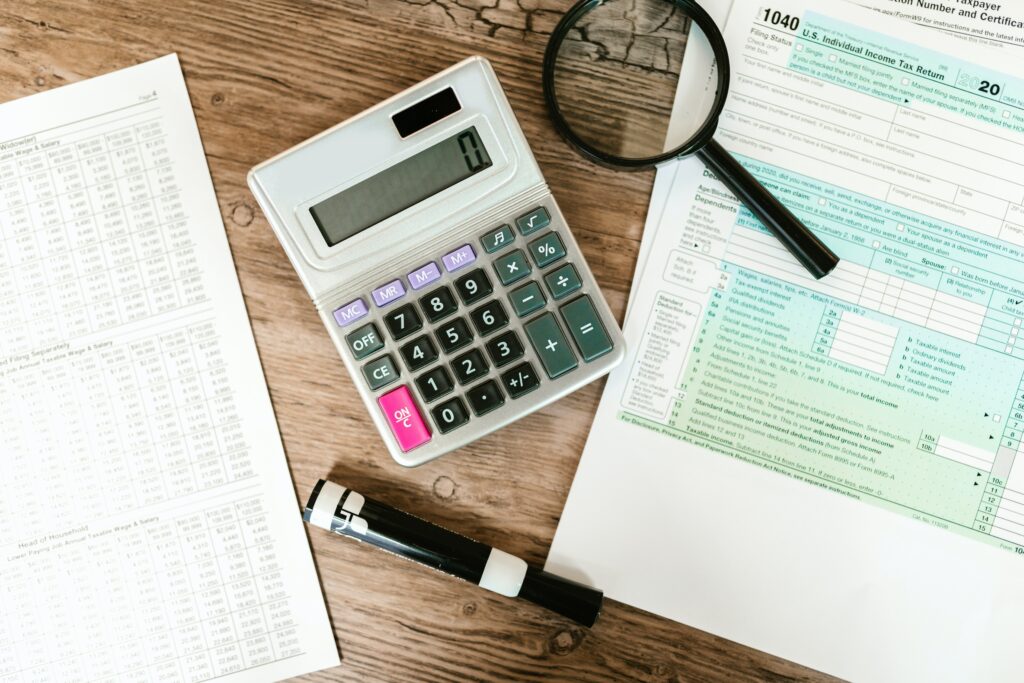The COVID-19 epidemic has caused havoc in businesses of all sizes. Many have been forced to close or lay off their employees.Employee Retention (ERC) Credit is available to businesses that need it.
The ERC is an refundable tax credit which businesses can claim for wages that were paid to their employees during the pandemic.It is designed to help businesses keep their employees on payroll, even if they are unable to operate normally.
If you own a small business and have been affected by the pandemic then the ERC will help you to keep your staff on board, as well as your business going.Visit the IRS website to learn more about ERCs and how you can claim them. You can also speak with a tax adviser or read the following.

For a brief reading of what the Employee Retention Credit or ERC is, take a look at this video from the YouTube channel “ERC Specialists”. You can also continue below to read an in-depth explanation of ERC.
-a}
The Employee Retention CreditEmployee Retention Tax Credit Reinstatement Act
Employee Retention Credit (ERC) is a tax credit for businesses that can be claimed if they pay employees wages during the COVID-19 Pandemic.The Coronavirus Aid, Relief, and Economic Security Act created the Employee Retention Credit (ERC) in March 2020. Its purpose is to assist businesses to keep their employees, even if the business is unable to function normally.
ERCs are available to all businesses, even tax-exempt ones.A business must be eligible if it has experienced a significant drop in gross receipts, or if they have been suspended or fully suspended because of a COVID-19 related government order.
Businesses that have been affected by this pandemic can receive a substantial financial boost from the ERC.It can be used to help businesses keep their employees, cover their payroll costs and invest for the future.
Why was the ERC created?
The COVID-19 epidemic caused a severe downturn in the economy, which forced many businesses to close or lay off their employees.The ERC is designed to help keep businesses open and their employees working so that they can resume normal operations as soon as the pandemic subsides.
ERC Benefits
The ERC is a great way to boost the finances of businesses affected by pandemics.It can assist in keeping employees on board, which will help the business recover quickly.
The ERC, which is a tax credit that is claimed even by businesses who do not owe a dime in taxes, is refundable.Businesses can claim the ERC on wages paid to employees that are not working because of COVID-19. This includes employees who have been furloughed, quarantined, or are otherwise not allowed to work. Employee Retention Tax Credit Reinstatement Act
Impact of ERC on Businesses and the Economy
The ERC was able to keep millions of Americans working during the COVID-19 pandemic.The ERC also helped to keep businesses afloat through the economic storm.
The ERC is estimated to have saved over 10 million jobs and prevented hundreds of thousands of businesses from closing their doors.It also contributed to the recovery of the economy by increasing consumer spending, and investing.

> > Click Here to Find Out if You Are Eligible for ERC< <
Eligibility
The Employee Retention Credit (ERC) is a tax credit available to businesses that have been impacted by the COVID-19 pandemic. To be eligible, a business must have experienced a significant decline in gross receipts or have been fully or partially suspended due to a COVID-19-related government order.
The test for a decline in gross receipts is the main difference between 2020 and 2021 ERC.In order to qualify for the 2020 ERC, businesses must have had a substantial decline in gross revenues of at least half compared with the same quarter last year.In 2021, a business must have experienced a significant decline in gross receipts of at least 20% compared to the same quarter in the previous year.
Business Qualifications
The ERC is available to businesses in two different ways.
- ERC for a business suspended fully or partly by a Government Order: An ERC can be awarded to a business that is suspended either completely or partially by an order of the government due COVID-19.Businesses ordered to close, reduce capacity or comply with certain restrictions are eligible for ERC.
- Significant decline in gross receipts: A business that has experienced a significant decline in gross receipts due to COVID-19 is also eligible for the ERC.Significant declines in revenue are defined as a decrease of at minimum 50% in 2020 quarters or at most 20% in 2021 quarters compared to same quarters the year before.
Examples and Scenarios
These examples and scenarios illustrate the criteria for each:
An order of the government may suspend all or part of a program.
- ERC may be available for a restaurant that has to close because of a government directive.
- ERC may be available for a gym which is forced to operate at reduced capacity by a COVID-19 government order.
Significant decline in gross receipts:
- A retail store that experiences a 50% decline in sales due to COVID-19 is eligible for the ERC.
- ERCs are available for manufacturers that cannot operate at their full capacity as a result of disruptions in supply chains.

> > Click Here to Find Out if You Are Eligible for ERC< <
Credit Amount
Employee Retention Credit is a tax deduction that businesses may claim on wages they paid employees in the COVID-19 pandemic.The amount varies depending on how many employees are employed and what quarter it is.
Credits for 2020 are equal to 50% the qualified wages paid by employees, up to a maximum amount of $10,000 per employee.This means that a business could receive a credit of up to $5,000 per employee for 2020.
For the first quarters of 2021, the credit equals 70% of wages that are qualified. However, this is limited to $10,000 per quarter per employee.This means a company could receive a credit for up to $7,000 for each employee per quarter in the first three months of 2021. The total for the entire year is up to $21,000.

> > Click Here to Find Out if You Are Eligible for ERC< <
Claiming the Credit
How to Claim ERC in Federal Employment Taxreturn
To claim the Employee-Retention Credit (ERC), businesses must file a Form 941-941-X, Adjusted Employer Quarterly Federal Tax return or Claim of Refund.This form may be used for any quarter that the business is eligible for the credit.
Options for Claiming the ERC in Advance
There are three options available to businesses for claiming ERC:
- Claim the credit ahead of time: Businesses may claim the credit by reducing the quarterly employment tax deposit.To do this, business must file IRS Form 7220, Advance Payment for Employer Credits & Taxes.
- Businesses can reduce their quarterly deposits for employment tax by the amount they anticipate receiving.To do this, businesses must file Form 941 with the IRS and indicate the amount of the credit they are reducing their deposits by.
- Request a refund: Businesses that have already paid their employment taxes can request a refund of the credit by filing Form 941-X with the IRS.
Calculating the Credit Amount and Avoiding Double-dipping with Other Relief Programs
Multiplying the amount of ERC by the credit rate is how the ERC amount is calculated.The credit rate is 50% for 2020 and 70% for the first three quarters of 2021.
Businesses must be cautious to not double dip with other relief programmes.Businesses can’t, for instance, claim ERC wages if they also claim Paid Family Leave Credit (PFML) or Work Opportunity Tax Credit.
Tips and Resources for Recordkeeping and Documentation
Keep detailed records for all wages that were paid to employees in the ERC period.This will enable the business to calculate the credit amount accurately and provide evidence to support the claim, if audited. Employee Retention Tax Credit Reinstatement Act
Here are some tips for recordkeeping and documentation:
- All payroll records should be kept, including W-2s and Forms 941s.
- Keep track of the hours that employees work, including sick leave, vacation time, and holidays.
- Keep track of all wages paid to employees, including base wages, bonuses, and overtime pay.
- Keep track of government orders affecting your business.
The IRS provides many resources to assist businesses in claiming the ERC. They include fact sheets, videos, and FAQs.Businesses can also call 1-800-829-1040 to get help from the IRS.

> > Click Here to Find Out if You Are Eligible for ERC< <
Examples of Eligible Businesses
Businesses affected by the COVID-19 virus can claim an Employee Retention credit (ERC).Following are some of the businesses that might be eligible to receive the Employee Retention Credit.
- Restaurants closed due to government orders
- Retail stores that experienced a significant decline in sales
- Manufacturers unable to operate at full capacity due to supply chain disruptions
- Non-profit organizations who saw their donations decrease
- Hotels and hospitality businesses
- Travel and Tourism Businesses
- Entertainment and Event Businesses
- Personal care businesses
- Fitness studios and gyms
- Salons and spas
- Retail shops selling non-essential items
- Businesses who were forced to operate with a reduced capacity
- Businesses forced to adopt new safety protocols and measures
- Businesses that experienced increased costs due to COVID-19
The ERC may also be available to businesses that were suspended or partially by government orders or experienced a substantial decline in gross revenues due to COVID-19. Employee Retention Tax Credit Reinstatement Act
Below are some specific examples on how businesses have utilized the ERC.
- The ERC allowed a restaurant to retain its staff after it was forced to shut down for several months by government order.
- The ERC was used by a retail store to offset payroll costs after it experienced a 50% drop in sales as a result of COVID-19.
- The ERC allowed a manufacturer who was not able to operate at its full capacity because of supply chain disruptions to continue producing essential goods and keep their employees on the payroll.
- The ERC allowed a nonprofit organization to continue providing essential services despite a decline in donations due to COVID-19.
You should contact a professional tax advisor if, as a small business owner, you have any doubts about your eligibility for the ERC.They can help determine your eligibility as well as claim the credit for you if you’re eligible.

> > Click Here to Find Out if You Are Eligible for ERC< <
Avoiding Scams
ERC Scams, Aggressive Marketing and Other Risks
Unfortunately, some scammers take advantage of companies that qualify for the Employee Retention Credit.These scammers use aggressive marketing to convince businesses to subscribe to their services even if that business isn’t eligible for the Employee Retention Credit (ERC).
Warning Signs and Red Flags
Here are some warning signs and red flags to identify potential ERC scammers:
- They guarantee to refund your money without looking into your records.
- You will be charged high fees upfront, or a percentage of your refund.
- These salespeople use high-pressure tactics. Employee Retention Tax Credit Reinstatement Act
- They aren’t affiliated with an established tax professional association.
- You will be asked to provide your personal information or financial details upfront.
Reporting Suspicious Activity and Protecting Personal Data
You should contact the IRS if you receive a call from an ERC scammer.You can do this by calling 1-800-829-1040 or by visiting the IRS website.
Also, you should be cautious about protecting your financial and personal data.Do not share your personal data with anyone who contacts uninvited.If you are unsure whether or not a business is legitimate, you can check their reviews online or contact the IRS for assistance.

> > Click Here to Find Out if You Are Eligible for ERC< <
Conclusion
In this article we discussed the Employees Retention Credit, tax-relief program that assists eligible employers in keeping their employees on the payroll during the COVID-19 epidemic.We have explained the eligibility requirements, the claiming process, and the potential scams related to the ERC.
We also have some tips and materials for documenting your records.ERCs are a valuable tool that employers can use to lower their employment tax liability and improve their cash flow. They also help support their workforce.If you’re an eligible employer, you should claim the credit. You can also seek professional advice if you need it.

> > Click Here to Find Out if You Are Eligible for ERC< <
Frequently Asked Questions about Employee Retention Credits
Employee Retention Tax Credit Reinstatement Act
What is the ERC?
Businesses affected by COVID-19 can apply for a refundable income tax credit.
This credit is equal in value to 50% of wages qualified to be paid in 2020. It is also equal in value to 70% of wages qualified to be paid in the first 3 quarters of 2021.
Who is eligible for the ERC?
Eligible companies for the ERC are those businesses that experienced a significant fall in gross sales or were partially or completely suspended because of government orders triggered by the COVID-19 outbreak.
What is qualified wage?
Qualified wages include wages, salaries, tips, and bonuses paid to employees.
Health insurance premiums paid by the employer are also considered qualified wages.
How do I claim the ERC?
The IRS will accept amended Forms 941 and 941-X from businesses to claim the ERC.The amended Form 941-X must be filed within three years of the date the original Form 941 was filed.
Do I have to pay back the ERC?
The ERC is not a tax credit that needs to be repaid.
Can I claim the ERC if I received a PPP loan?
The ERC is available to businesses who have taken out a PPP (Paycheck protection Program) loan.
Businesses cannot claim ERCs for wages they also claimed as PPPs.
Can self-employed individuals claim ERC?
Yes, you can get the ERC if you are a self-employed individual.
Self-employed individuals can claim the ERC on their Schedule C form.
Can non-profit organisations claim ERC?
Yes, organizations that are not for profit can qualify for the ERC.
Nonprofits may claim ERCs on their Form 990T.
Can companies that own a foreign affiliate claim ERCs?
Businesses can claim ERC for wages paid by foreign subsidiaries to their employees.
However, they must also meet certain additional requirements before they are eligible to claim the benefits.
What are the common mistakes businesses make when they claim ERC?
There are a few common mistakes that businesses should avoid when claiming an ERC. These include but are not restricted to
- Wrong calculation on credit
- The failure to include all qualifying wages
- Failing to amend Forms 941-X within the specified timeframe.
